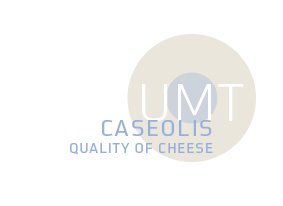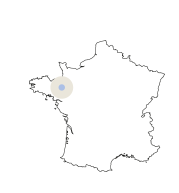
Coordination
Partners
Objectives
Explore the first steps in the hydrolysis of caseins in high-scald pressed cooked and uncooked cheeses.
This entails better understanding the role of the different enzymatic actors involved in the hydrolysis of casein and in identifying the synergies that can exist between the key factors, whether they are of microbial origin, endogenous to milk or of technological nature. The UMT more particularly studies the so-called secondary caseolytic agents (cathepsin D, proteases from somatic cells, proteases from lactic ferments), as the involvement of the coagulant and of the plasmine is, now, well documented. Special attention is given to the consequences of this primary proteolysis on the development of sensory and functional qualities: ability to be cut and culinary properties.
Caseolis also has a mission to enrich knowledge in order to feed the technological reasoning of cheese makers, especially within the framework of highly standardised and enriched milks, develop and disseminate methods for monitoring proteolytic agents and for characterising the functional properties of cheese.
This UMT is located in Rennes.
Actions
Analytical developments allowing for the observation of the biodiversity of caseolytic agents, monitoring them qualitatively and quantitatively in situ, improving the techniques for assessing the hydrolysis of casein in cheese and measuring the cutting properties.
Carrying out experiments with uncooked and high-scald pressed cheeses, including monitoring caseolytic agents in milk right through to production and ripening.
Characterising the functional and sensory quality of the cheese obtained.
Five major themes
Improving and validating techniques for measuring the hydrolysis of casein.
Biodiversity of the cell-wall proteases of thermophile Lactobacillus.
Cathepsin D and proteases from somatic cells.
Impact of the emerging techniques for preparing milk on the hydrolysis of casein.
Relations between the hydrolysis of casein and the ability of cheese to be cut.






